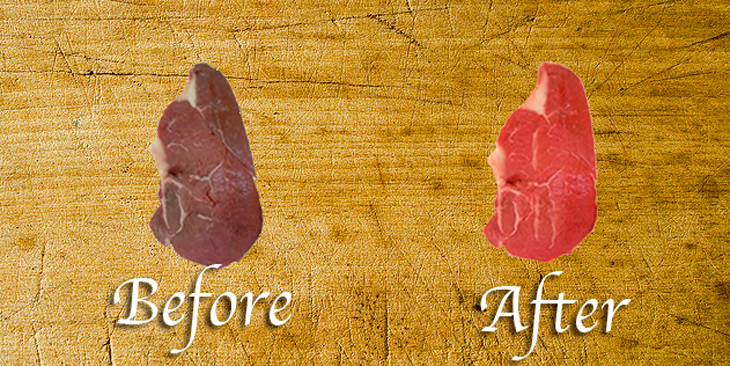After reading this you may never trust Congress or the FDA again, let alone corporate chain grocery stores. This toxic practice makes seriously decayed meat look fresh for weeks and is banned in many countries including the European Union and Japan.
Many consumers are unaware that over 70% of beef and chicken in the United States and Canada is treated with poisonous carbon monoxide gas and the FDA allows it, despite the known public health risks. A bill was introduced in Congress that would require the labeling of meat that has been treated with carbon monoxide but it was never enacted and the topic was swept under the rug entirely. [Bill: H.R. 3115 (110th) introduced on July 19, 2007; never enacted.] This practice makes meat appear and smell fresh even when contaminated with harmful bacteria such as Clostridium botulinum, Salmonella, Campylobacter, and E-coli 0157:H7.
When breathed in, carbon monoxide can – infamously – cause acute and immediate death. However, breathing less than deadly levels can also cause or are associated with many severe chronic health affects, particularly on the brain and neurological system.
Up to forty percent of those poisoned can suffer problems that range from amnesia, headaches and memory loss to personality and behavioural changes, loss of muscle and bladder control and impairment of coordination and vision.
So are there any ill effects from ingesting carbon monoxide in small quantities over long periods of time?
At least one scientific study claimed it was highly unlikely to cause toxic effects in human health, instead praising the “cherry red color” it gave to meat:
ABSTRACT: Retail meat can be packaged in gas mixtures containing 60–70% carbon dioxide (CO2), 30–40% nitrogen (N2) and <0.5% carbon monoxide (CO). This gas mixture with CO provides a unique combination of a long microbiological shelf life and a stable, cherry red colour of the meat. The shelf life of meat packaged in the CO mixture is longer than that of meat packaged in the commonly used atmospheres with high oxygen (O2), that is, approximately 70% O2 and 30% CO2. The consumption of meat that has been packaged in a CO mixture will result in only negligible levels of carboxyhaemoglobin in the blood.It is highly improbable that the use of CO in the packaging of meat will present a toxic threat to consumers.
Not completely sure over here what the long-term effects might be, but one claim that any harm is “highly improbable” is hardly enough to keep people from being just a little freaked out that this is one known toxin being added to the food supply.








